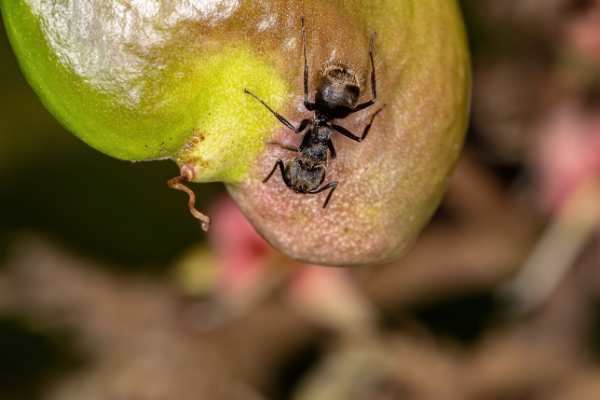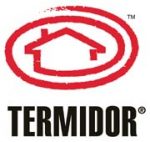 Tapinoma sessile is a species of small ant that goes by the common names odorous house ant, sugar ant, stink ant, and coconut ant. Their colonies are polydomous (consist of multiple nests) and polygynous (contain multiple reproducing queens). Like many social insects, T. sessile employs complex foraging strategies, allocates food depending on environmental conditions, and engages in competition with other insects.
Tapinoma sessile is a species of small ant that goes by the common names odorous house ant, sugar ant, stink ant, and coconut ant. Their colonies are polydomous (consist of multiple nests) and polygynous (contain multiple reproducing queens). Like many social insects, T. sessile employs complex foraging strategies, allocates food depending on environmental conditions, and engages in competition with other insects.
T. sessile can be found in a huge diversity of habitats, including within houses. They forage mainly for honeydew, which is produced by aphids and scale insects that are guarded and tended by the ants, as well as floral nectar and other sugary foods. They are common household pests and are attracted to sources of water and sweets.
As with most other ants, T. sessile is eusocial. This is characterized by reproductive division of labor, cooperative care of the young, and overlapping generations.
Description
T. sessile is a small ant that ranges in color from brown to black, and varies in length from 1⁄16 to 1⁄8 inches (1.5–3.2 mm). When crushed, these ants leave a smell which leads to their nickname “stink ant”.
The gaster portion of the abdomen sits directly on top of the petiole in the abdomen of this species, which helps distinguish them from other small, dark, invasive ants. A comparison of the side view of T. sessile (below) and a diagram of the a typical ant body (below) shows how T. sessile’s gaster sits atop its petiole. This leads to a very small petiole and to the gaster being pointed downward. The anal pore then opens ventrally (toward the abdomen) instead of distally.
Behavior
Colonies vary in size from a few hundred to tens of thousands of individuals. Big colonies usually have multiple queens.
The odorous house ant is tough: Injured workers have been observed to continue living and working with little hindrance, some queens with crushed abdomens still lay eggs, and there are documented instances of T. sessile queens surviving without food or water for over two months. They also appear highly tolerant to heat and cold. These ants are difficult to remove from a home after their colony has become well-established.
When offered a choice of food sources, the ants preferred sugar and protein over lipids, and this preference persisted in all seasons. When specific sugar sources were studied the ants preferred sucrose over other sugars, such as fructose or glucose.
Source: Wikipedia





